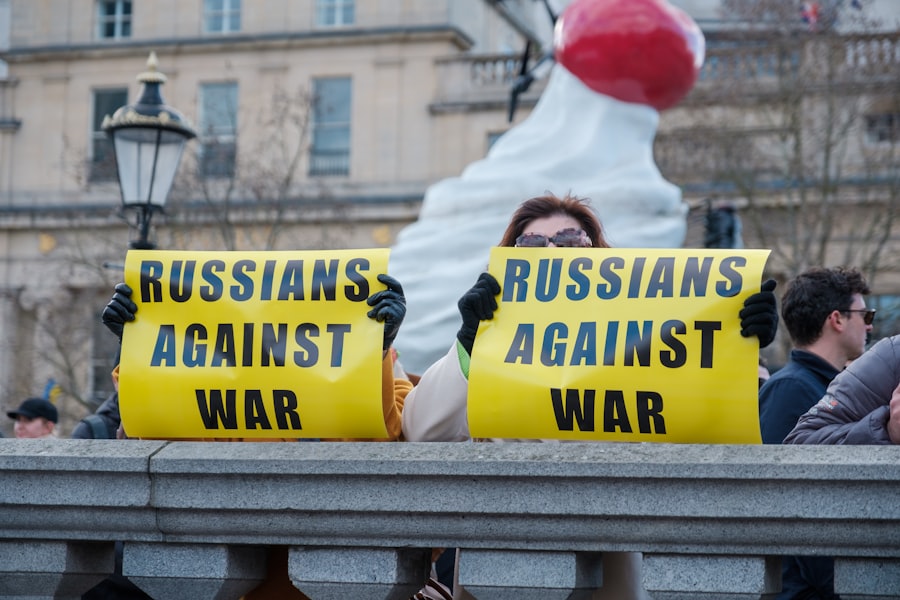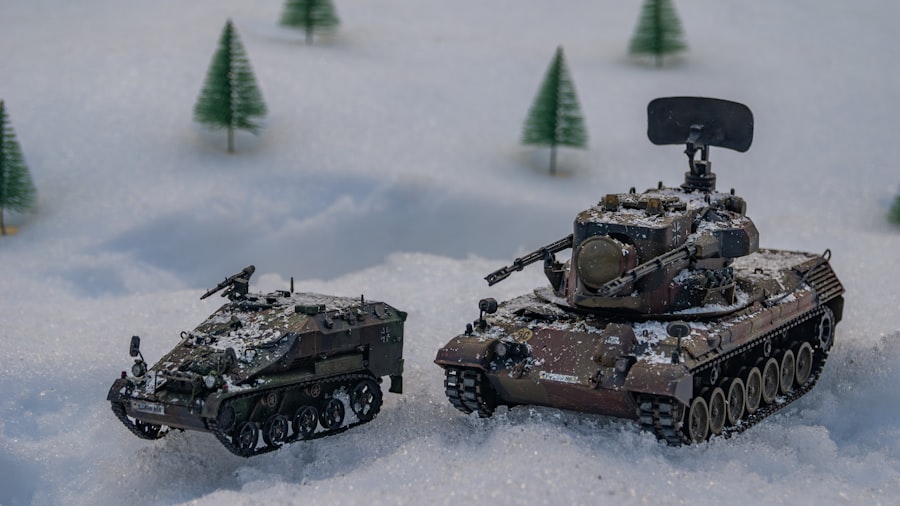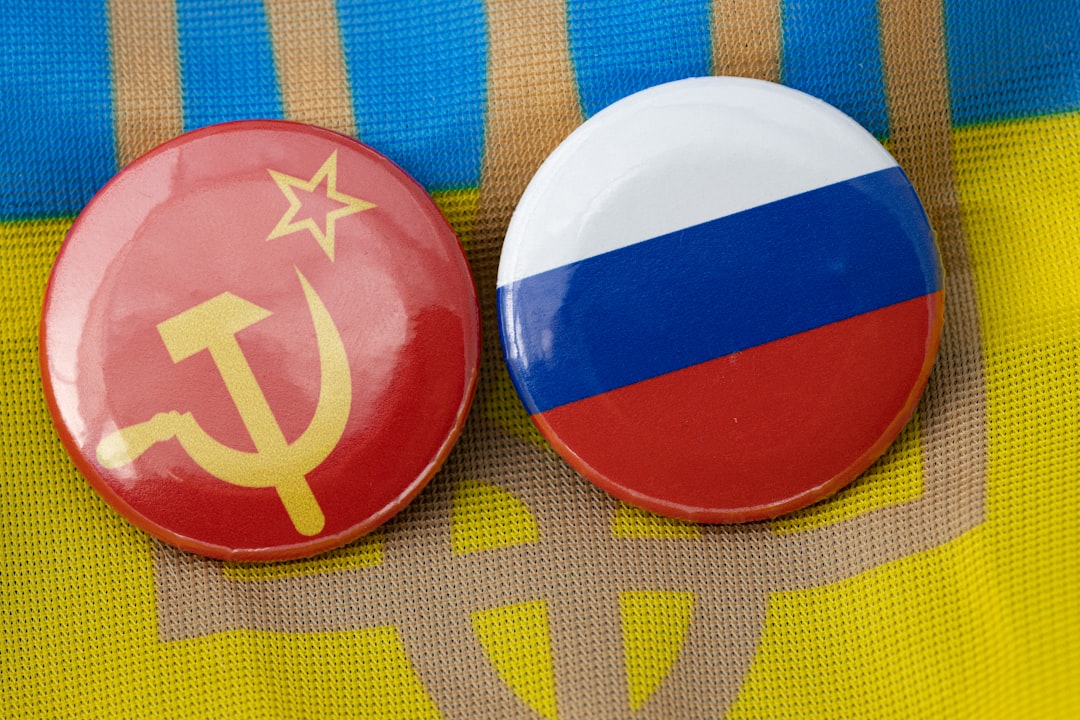The 1980s marked a pivotal decade in the history of the Cold War, characterized by heightened tensions between the United States and the Soviet Union. As the ideological battle between capitalism and communism intensified, both superpowers engaged in a series of confrontations that threatened global stability. The decade was defined by a complex interplay of military posturing, political maneuvering, and a series of crises that underscored the fragility of international relations.
The Cold War, which had been simmering since the end of World War II, reached new heights of hostility during this period, as both nations sought to assert their dominance on the world stage. The geopolitical landscape of the 1980s was shaped by a series of events that exacerbated existing tensions. The arms race escalated, with both superpowers amassing vast arsenals of nuclear weapons, while proxy wars erupted in various regions around the globe.
This environment of suspicion and hostility set the stage for a decade filled with crises that would ultimately define the trajectory of the Cold War and influence international relations for years to come.
Key Takeaways
- Cold War tensions in the 1980s were marked by a series of events that heightened the rivalry between the United States and the Soviet Union.
- Ronald Reagan’s aggressive stance towards the Soviet Union, including his “evil empire” speech, contributed to escalating Cold War tensions.
- The Soviet invasion of Afghanistan in 1979 further strained relations between the US and the USSR, leading to increased Cold War tensions.
- The arms race and the development of nuclear weapons by both superpowers intensified Cold War tensions and raised the specter of global destruction.
- The Strategic Defense Initiative, or “Star Wars,” proposed by Reagan, played a significant role in escalating Cold War tensions and increasing mistrust between the US and the USSR.
The rise of Ronald Reagan and his aggressive stance towards the Soviet Union
The election of Ronald Reagan in 1980 marked a significant turning point in U.S. foreign policy, particularly regarding relations with the Soviet Union. Reagan’s administration adopted an aggressive stance, viewing the Soviet Union not merely as a rival but as an “evil empire” that posed a direct threat to American values and global stability.
This rhetoric resonated with many Americans who were disillusioned by the perceived failures of previous administrations to contain Soviet expansionism. Reagan’s approach was characterized by a willingness to confront the Soviet Union head-on, rather than pursuing détente or diplomatic engagement. Reagan’s policies included a substantial increase in military spending, aimed at modernizing U.S.
forces and enhancing deterrence capabilities. He believed that a strong military posture would compel the Soviets to reconsider their aggressive strategies. This approach was evident in initiatives such as the Strategic Defense Initiative (SDI), which sought to develop a missile defense system capable of intercepting incoming nuclear missiles.
Reagan’s hardline stance not only intensified the arms race but also contributed to an atmosphere of fear and uncertainty, as both superpowers prepared for potential conflict.
The Soviet invasion of Afghanistan and its impact on Cold War tensions

The Soviet invasion of Afghanistan in December 1979 served as a catalyst for escalating Cold War tensions throughout the early 1980s. The invasion was perceived by the United States and its allies as an aggressive act of expansionism, prompting a strong response from the West. In retaliation, the U.S. implemented economic sanctions against the Soviet Union and provided military assistance to Afghan resistance fighters, known as the Mujahideen. This conflict became a focal point in the broader struggle between the two superpowers, as it exemplified the ideological battle being waged in various regions around the globe. The war in Afghanistan had profound implications for both superpowers. For the Soviet Union, it became a costly and protracted conflict that drained resources and morale. The U.S., on the other hand, viewed its support for the Mujahideen as a means to undermine Soviet influence and demonstrate its commitment to containing communism.
The arms race and the development of nuclear weapons
| Country | Year of First Nuclear Test | Number of Nuclear Warheads (2021) | Estimated Nuclear Weapons Spending (2020) |
|---|---|---|---|
| United States | 1945 | 5,800 | 37.4 billion |
| Russia | 1949 | 6,375 | 8.5 billion |
| China | 1964 | 320 | 10.1 billion |
| United Kingdom | 1952 | 225 | 8.9 billion |
| France | 1960 | 290 | 4.9 billion |
| India | 1974 | 150 | 2.4 billion |
| Pakistan | 1998 | 165 | 1 billion |
| North Korea | 2006 | 40 | Unknown |
The arms race between the United States and the Soviet Union reached alarming levels during the 1980s, as both nations sought to outpace each other in nuclear capabilities. The development and deployment of advanced weaponry became a central focus for both superpowers, leading to an unprecedented accumulation of nuclear arsenals. This competition was fueled by fears of mutual destruction, as each side sought to ensure its own security while simultaneously attempting to deter aggression from the other.
The proliferation of nuclear weapons during this period raised concerns about global security and stability. The doctrine of mutually assured destruction (MAD) became a guiding principle for both nations, as they recognized that any nuclear conflict would result in catastrophic consequences for all involved. However, this understanding did little to alleviate tensions; instead, it created an environment where miscalculations or misunderstandings could lead to devastating outcomes.
The arms race not only defined U.S.-Soviet relations but also influenced international perceptions of security and diplomacy throughout the decade.
The Strategic Defense Initiative and its role in escalating tensions
Introduced by President Reagan in 1983, the Strategic Defense Initiative (SDI) aimed to create a comprehensive missile defense system capable of intercepting incoming nuclear missiles before they could reach their targets. While proponents argued that SDI would enhance national security and deter Soviet aggression, critics contended that it would only exacerbate tensions between the superpowers. The initiative represented a significant shift in U.S.
defense policy, moving away from traditional deterrence strategies toward an emphasis on active defense. The announcement of SDI sparked outrage within the Soviet leadership, who viewed it as a direct challenge to their nuclear deterrent capabilities. The initiative raised fears that it could destabilize the balance of power, prompting both sides to accelerate their military programs in response.
As research and development efforts for SDI progressed, so too did concerns about an escalating arms race that could lead to increased hostilities. Ultimately, SDI became emblematic of the broader tensions characterizing U.S.-Soviet relations during this period.
The Soviet shootdown of Korean Air Lines Flight 007

On September 1, 1983, Korean Air Lines Flight 007 was shot down by Soviet fighter jets after straying into prohibited airspace near Sakhalin Island. The incident resulted in the deaths of all 269 passengers and crew members on board and ignited a firestorm of international outrage. The U.S. government condemned the Soviet action as an egregious violation of international law and human rights, further straining relations between Washington and Moscow. The shootdown highlighted the dangers inherent in Cold War tensions, as miscommunication and misunderstandings could lead to tragic consequences. In response to the incident, President Reagan intensified his rhetoric against the Soviet Union, framing it as a regime willing to resort to violence against innocent civilians to maintain its grip on power. This event not only deepened animosities but also underscored the precarious nature of international relations during this volatile period.
The Able Archer 83 exercise and its impact on Cold War tensions
In November 1983, NATO conducted a military exercise known as Able Archer 83, which simulated a nuclear conflict scenario involving Western forces. While intended as a routine training exercise, it inadvertently raised alarms within the Soviet leadership, who interpreted it as a potential precursor to an actual attack. The heightened state of alert among Soviet forces led to fears that miscalculations could trigger an unintended escalation into nuclear war.
The Able Archer exercise underscored the fragility of communication between superpowers during this period. The Soviets’ perception of threat prompted them to take defensive measures that could have easily spiraled out of control. In retrospect, historians have noted that this incident served as a wake-up call regarding the dangers posed by misunderstandings in high-stakes military situations.
It highlighted the urgent need for improved communication channels between nations engaged in intense rivalries.
The Reykjavik Summit and its failure to reduce tensions
In October 1986, President Reagan and Soviet General Secretary Mikhail Gorbachev met at the Reykjavik Summit in Iceland with hopes of reducing Cold War tensions and making significant strides toward nuclear disarmament. While both leaders expressed a willingness to engage in dialogue and explore arms reduction agreements, fundamental differences remained regarding key issues such as missile defense systems and the future of nuclear arsenals. Despite initial optimism surrounding the summit, negotiations ultimately faltered over disagreements on these critical points.
Reagan’s insistence on maintaining SDI clashed with Gorbachev’s desire for comprehensive disarmament without such initiatives in place. The failure to reach an agreement at Reykjavik illustrated not only the complexities inherent in U.S.-Soviet relations but also highlighted how deeply entrenched positions could hinder progress toward peace.
The Soviet Union’s deployment of SS-20 missiles in Europe
Throughout the early 1980s, the Soviet Union deployed SS-20 intermediate-range missiles across Eastern Europe, significantly altering the balance of power on the continent. These missiles were capable of striking targets in Western Europe within minutes, raising alarm among NATO allies who viewed them as a direct threat to their security. In response, NATO initiated its own deployment of Pershing II missiles in Western Europe, further escalating tensions between East and West.
The deployment of SS-20 missiles became a focal point for anti-nuclear protests across Europe, as citizens expressed their fears about potential nuclear conflict on their doorstep. Activists argued that these weapons increased the likelihood of war rather than providing security. This situation exemplified how military posturing could have profound implications for public sentiment and political discourse within both blocs during this tumultuous decade.
The escalation of proxy wars in the developing world
As Cold War tensions intensified during the 1980s, both superpowers increasingly engaged in proxy wars across various regions in the developing world. From Central America to Africa and Asia, conflicts became battlegrounds for U.S.-Soviet rivalry as each side sought to expand its influence through support for opposing factions. These proxy wars not only exacerbated local conflicts but also contributed to broader geopolitical instability.
In places like Nicaragua and Angola, U.S.-backed forces clashed with Soviet-supported regimes or insurgents, leading to prolonged violence and suffering for civilian populations caught in the crossfire. The consequences were dire; millions were displaced or killed as superpower rivalries played out on foreign soil. This pattern underscored how Cold War dynamics extended beyond Europe and directly impacted lives around the globe.
The eventual thawing of Cold War tensions with the end of the 1980s
As the decade drew to a close, signs began to emerge indicating a potential thawing of Cold War tensions between East and West. Mikhail Gorbachev’s rise to power in 1985 brought about significant changes in Soviet policy, including initiatives aimed at reforming both domestic governance and foreign relations through glasnost (openness) and perestroika (restructuring). These reforms signaled a willingness to engage with Western powers and seek peaceful resolutions to longstanding conflicts.
The culmination of these efforts was evident in events such as the signing of arms reduction agreements and increased diplomatic engagement between superpowers. By embracing dialogue over confrontation, Gorbachev laid the groundwork for a new era in international relations that would ultimately lead to an end to Cold War hostilities by the early 1990s. As tensions eased, hopes for lasting peace emerged from what had once seemed an unyielding ideological divide—a testament to how transformative leadership can reshape even entrenched rivalries.
During the 1980s, Cold War tensions between the United States and the Soviet Union reached a critical point, marked by a series of geopolitical confrontations and an escalating arms race. This period was characterized by events such as the Soviet invasion of Afghanistan, the U.S. Strategic Defense Initiative, and the deployment of intermediate-range nuclear forces in Europe. For a deeper understanding of the intricate dynamics and key events that defined this era, you can explore a related article on Cold War tensions from the 1980s by visiting this page. This article provides valuable insights into the political maneuvers and international relations that shaped the global landscape during this tumultuous decade.
WATCH THIS! The Nuclear Doomsday Machine Russia Built That Runs Itself
FAQs
What were the main causes of tensions during the Cold War in the 1980s?
During the 1980s, the main causes of tensions during the Cold War included the arms race between the United States and the Soviet Union, ideological differences between capitalism and communism, regional conflicts in Afghanistan and Central America, and the deployment of nuclear weapons in Europe.
How did the arms race contribute to tensions during the Cold War in the 1980s?
The arms race between the United States and the Soviet Union during the 1980s led to an escalation of tensions as both superpowers developed and deployed increasingly powerful nuclear weapons and advanced military technology, raising the risk of a potential nuclear conflict.
What role did regional conflicts play in escalating tensions during the Cold War in the 1980s?
Regional conflicts, such as the Soviet invasion of Afghanistan and the civil wars in Central America, became proxy battlegrounds for the United States and the Soviet Union, leading to increased tensions and competition for influence in these regions.
How did the deployment of nuclear weapons in Europe impact tensions during the Cold War in the 1980s?
The deployment of intermediate-range nuclear missiles in Europe by both the United States and the Soviet Union heightened tensions and raised the specter of a potential nuclear conflict on the continent, leading to widespread public concern and anti-nuclear protests.
What were the key events that increased tensions during the Cold War in the 1980s?
Key events that increased tensions during the Cold War in the 1980s included the Soviet invasion of Afghanistan, the election of Ronald Reagan as U.S. President and his anti-Soviet rhetoric, the downing of Korean Air Lines Flight 007, and the deployment of Pershing II missiles in Europe by the United States.
